
17 minute read
COVID-19 and the mining industry
COVID-19 AND
THE MINING INDUSTRY


By Mongezi Veti – Executive Head: Sustainability at Exxaro Resources


Before COVID-19, South Africa’s mining industry was already working hard to overcome challenges like rising costs, falling productivity and uncertainty over regulations. In March 2020, President
Cyril Ramaphosa announced a nationwide shutdown to help stop the spread of the virus and save lives. A er lockdown restrictions were gradually eased and operations were allowed to continue, South Africa came to face the new year with a second wave of the pandemic and more uncertainty. Only this time, the mining industry has used the lessons it learnt during the first wave to help ensure business continuity and operational resilience. In most cases, with strong leadership and cross-company collaboration, we’ve found that mining companies have put in place excellent health and safety measures to monitor and mitigate the spread of the virus and ensure employee well-being. The impact that this will have on supporting long-term economic recovery is immense and the fact that we have so quickly found new ways to work will go a long way to protecting livelihoods.

THE IMPORTANCE OF MINING IN A DIFFICULT ECONOMY
As well as disrupting production, the virus has wreaked havoc with global supply chains due to factory closures and halted transportation across borders. The restricted movement of people and the closure of nonessential services has also a ected demand for commodities, creating the perfect conditions for economic contraction.
Labour markets and the sectors that rely on them have been particularly susceptible to disruption caused by the pandemic.
For a mineral-rich country like South Africa, which employs 420 000 miners and generates roughly 8% of its GDP from the mining sector, a successful recovery of mining operations is not only crucial for achieving economic stability but also for the income of the employees and host communities that depend on its activities. ADAPTING TO CHANGE This knowledge of how critical the sector is to the country and the people who live in it has galvanised the industry to come together and find ways to work in challenging conditions. The enclosed spaces in underground mines are much less than ideal for containing the spread of the virus. On top of that, the average age of the industry’s workforce is over 40, making employees much more vulnerable to serious health complications. Although the deck appeared to be stacked against us, the industry leveraged on its experience in dealing with health and safety to safeguard employees. The mining industry’s history with managing tuberculosis and HIV and responding to crises quickly and e iciently helped us mitigate the e ects of this pandemic. Considerable investments have been made in health infrastructure in the past few years, which has made contact tracing easier. The speed at which health and safety protocols were implemented under government guidelines was impressive. This included commissioning testing
Mongezi Veti.
R1-billion p/d
In South Africa, one mining job can support seven to 10 dependants. The prosperity of indirect economies, such as shops, restaurants or hotels in mining towns, are also deeply connected to the welfare of the mining industry.
Many mining companies o er vital goods and services to remote regions and the people who live there. It’s estimated that almost R1-billion a day was lost to the economy when mines could not operate, making the success of the industry critical to all South Africans.
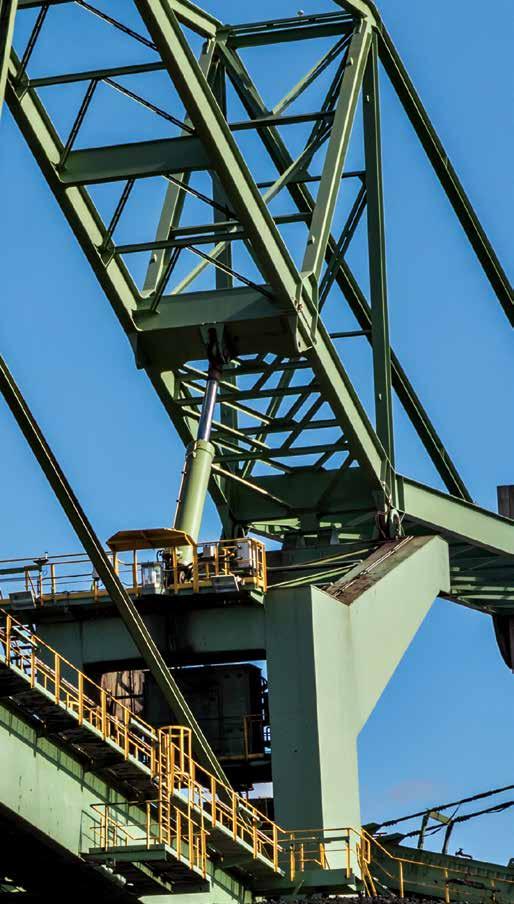
facilities, providing personal protective equipment to all employees and members of the community, establishing good hygiene practices, providing health facilities, reduced shift sizes, making flu vaccines available, conducting temperature screenings, updating business processes, establishing a contact-tracing system, creating awareness campaigns and enhancing employee assistance programmes.
Through the Minerals Council South Africa (MCSA), mining companies have leveraged off each other’s strengths by aligning on recovery efforts. As an example, around 10% of the national mining workforce are foreign nationals and MCSA facilitated the screening, transportation and quarantining of these employees returning across borders after last year’s lockdown.
Many mining companies donated to the Solidarity Fund and assisted government with access to testing and health facilities. Collaboration has also been key to recovery in international mining communities, with the World Economic Forum citing shared values and commitments as the cornerstone of the mining sector’s success.
The COVID-19 death rate of mine workers is far lower for similar age groups in the country as a whole, although we do acknowledge that one death is too many.
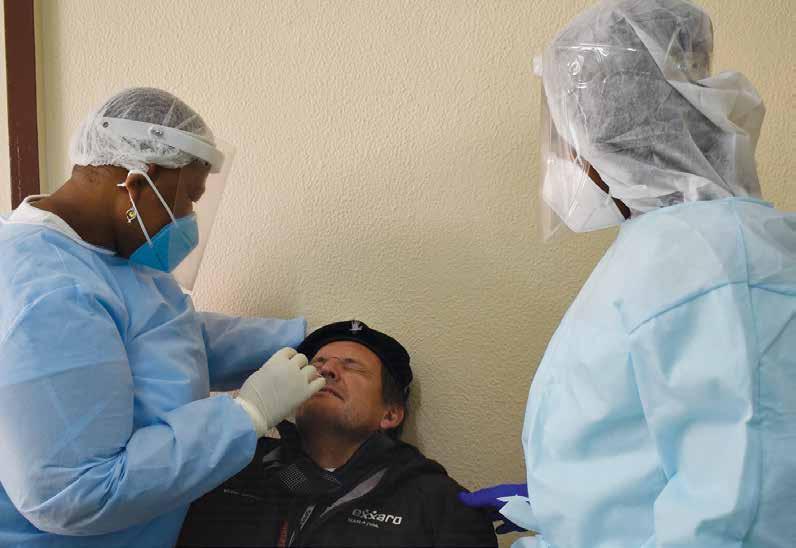

THE FUTURE OF MINING
While it may take some time for the global demand in commodities to recover, the mining sector should be on a slow, but steady, track to recovery. Despite decreased demand in 2020 and the costs incurred by South African mining companies to keep workers safe, market cap increased by 52% and revenue grew by 4%.
Chinese demand is on the rise as they ramp up infrastructure spending, with vaccine roll-outs expected to spur economic recovery.
There is also a paradigm shift in the making: the global pandemic has prompted more mining companies to look into how they have approached environment, social and corporate governance criteria.
As the real impact of climate change becomes more apparent, companies of the future are looking to diversify into clean energy and more sustainable practices. Stakeholders and investors are pushing for sustainable energy solutions, pointing towards a greener future for the mining industry.
The vulnerabilities that the pandemic has exposed in the labour market could also mean accelerated development of digital transformation, which would improve efficiencies and increase safety at mining sites. For companies that undervalued the importance of stakeholder communities, this crisis has shown that communities are key to supporting mining initiatives.
If anything, the pandemic has proven the industry’s resilience and willingness to adapt to unprecedented challenges. It has showcased the commitment of mining companies to their employees and communities, and reminded us of what we can achieve through collaboration and innovation. n

PROTECTING PEOPLE
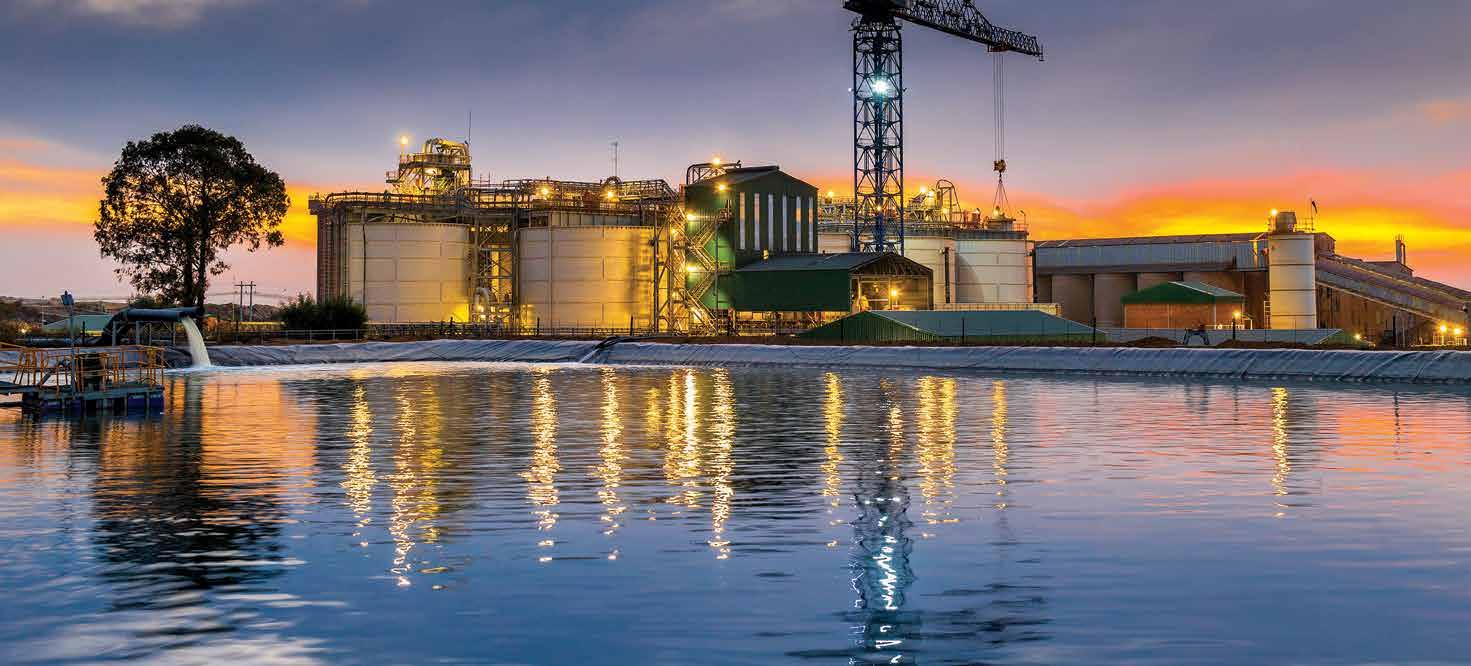
Pan African Resources at the forefront

Mining houses have been some of the most proactive in handling the COVID-19 pandemic, going the extra mile to ensure that its people remain safe. SA Mining recently caught up with Pan African Resources CEO Cobus Loots to chat about the impact of the pandemic on the sector and measures being implemented to address the situation.

HOW HAS THE COVID-19 PANDEMIC AFFECTED THE MINING SECTOR?
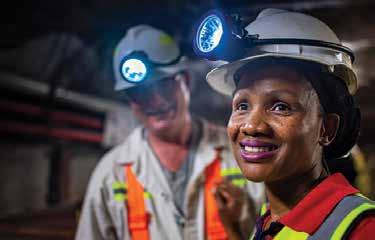
The pandemic has highlighted a new set of challenges in terms of the vulnerability of the mining sector to new communicable diseases. During the initial phases of the pandemic, and due to the unknown e ects of the virus, we had to work quickly to adapt and ensure the safety of our employees.
New safety protocols and standard operating procedures have become the norm and continue to be enforced and adapted as the new virus strains become evident.
WHAT NEW MEASURES HAVE MINING COMPANIES INSTITUTED?
Strict safety protocols have been introduced and are firmly in place. This includes temperature monitoring at key access points and regular disinfecting of surfaces, including underground areas.
The provision of face masks and other personal protective equipment, as well as education and information campaigns that reinforce safety messages either through flyers and/or safety videos, have also been developed. These campaigns will carry on into the future as mining companies continue their ongoing pursuit of a zeroharm workplace environment.
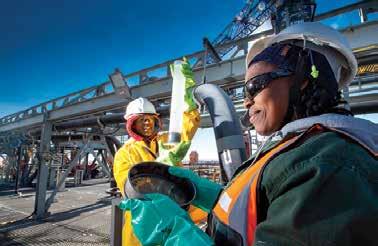
New safety protocols have become the norm.

HOW HAS THE PANDEMIC IMPACTED BUSINESS AND HAS IT INFLUENCED STRATEGY?
The main impact on business has been continuous monitoring of employees and isolation of individuals with symptoms, as well as contact tracing. Quarantine facilities and stand-by medical sta are also made available on-site or at accredited healthcare facilities. Pan African Resources helped our host communities with food parcels and water deliveries to assist with sanitation and lockdown measures, so that community members did not have to leave their homes unnecessarily.
Cobus Loots.
WHAT HAVE BEEN THE COST IMPLICATIONS OF COVID-19 FOR PAR?
During the early stages of the pandemic, just over R15-million was spent on COVID-19 prevention, community assistance and relief programmes. The costs are ongoing as prevention and mitigation standards are enforced and maintained.
ARE THERE ANY POSITIVES TO COME OUT OF THE PANDEMIC?
The mining sector has showcased its ability to adapt and maintain production during adversity, and to also have consistently high pandemic recovery rates as published by the Minerals Council South Africa.
Also, the good health and the predominantly young workforce in the country have stood mine employees in good stead against the pandemic. Companies including Pan African Resources have provided health supplements and immune boosters as added precautions and assistance to employees.
The sector has shown resilience and its ability to handle communicable diseases, having previously dealt with the HIV/ Aids virus and tuberculosis, and the high reported recovery rates for COVID-19 are evidence of continued resilience. ■

TOP 10


SECURITY INDUSTRY TRENDS IN 2021

Despite a highly unusual 2020, the security industry’s constant transformation has not stopped. Several significant shi s in the use of technology are even accelerating – for example the increasing of multi-perception technologies, the convergence of security systems, the popularity of artificial intelligence, and the rise of cloud solutions. Below are key trends that may a ect the security industry in both the short and long term.

INTELLIGENT VIDEO TECHNOLOGY HELPING DURING THE PANDEMIC
In the face of the COVID-19 pandemic, businesses are prioritising finding ways to resume operations safely. Intelligent video technology has shown great potential to help companies keep their employees and customers safe while getting back to work.
Powered by AI, security cameras monitor densely populated locations to ensure employees follow vital safety precautions – including social distancing, mask wearing and flow control – and provide initial temperature screenings.
Employees are avoiding unnecessary physical contact with shared hardware in this tense era, accelerating the touchless access control system trend we have seen in the market. Numerous modes of touchless verification – face recognition, palmprint recognition, NFC and QR codes – are being heavily promoted.
MULTI-DIMENSIONAL PERCEPTION
For a long time, capturing visual images was the core and only perception capability for video security systems. But with the development and application of sensing technologies, more powerful edge computing and intelligent algorithms, integrated security devices and systems that employ multiple sensors are becoming possible.
Now, more perception capabilities, such as radar detection, multispectral imagery, humidity and temperature measurement, and gas pressure detection, are being integrated with video cameras and systems.
VISIBILITY – ANY TIME, ANY CONDITION
Nowadays, low light imaging technology that provides colourful images in dark environments and at night is becoming popular in the security industry, and customers have shown a preference towards cameras with colour imaging 24/7.
More front-end cameras are now equipped with low light imaging technology to make sure they can “see” and reproduce image colour both day and night.
Furthermore, industry professionals are tending to choose thermal imaging that measures heat – or thermal radiation – to generate images from their field of view.
5G TECHNOLOGY FOR UHD AND WIRELESS VIDEO SECURITY
5G’s greater bandwidth and lower latency makes the regular transmission of high-quality images possible, and, with the widespread adoption of ultra-highdefinition (UHD) cameras, could bring new opportunities for video security.
In the forthcoming 5G networks, wireless cameras will proliferate, and more edge
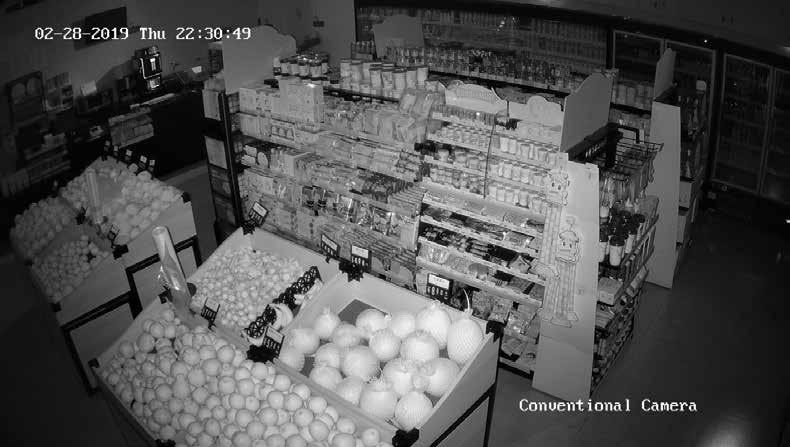
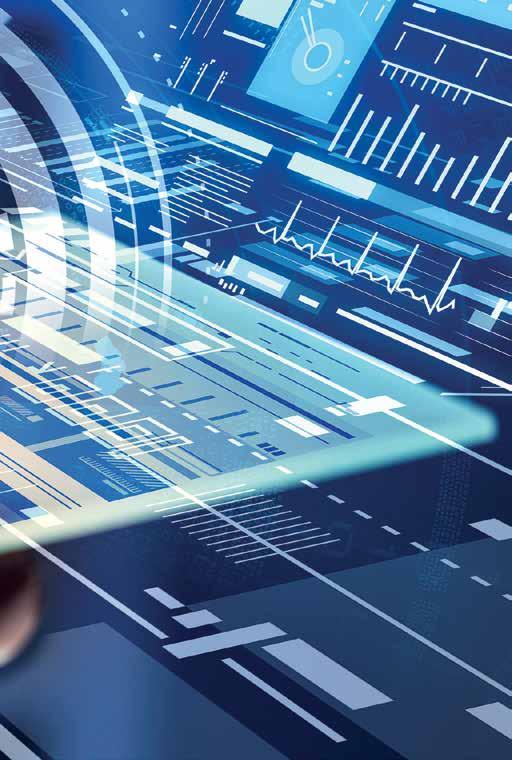

© Andrew Mu, product manager of Hikvision SA
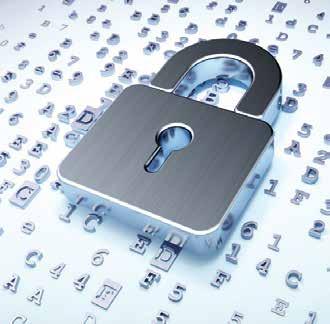
devices will be connected in remote locations. This will also facilitate wide and fast deployment of AI applications in edge devices.
CONVERGENCE OF MULTIPLE SECURITY SYSTEMS
We operate in an industry where users expect comprehensive solutions. The concept of systems working seamlessly together has long been desired by the vast majority of security professionals.
The benefits of converging multiple security systems – including video, access control, alarm, fire prevention and emergency management – into a unified platform are manifold, with efficiency and cost-effectiveness the most obvious.
DIGITAL TRANSFORMATION OF ENTERPRISES ENABLED BY VIDEO SECURITY SYSTEMS
Aside from security and protection, the added value video security systems offer has expanded to assist enterprise-level businesses in their digital transformation process and gain insights into development opportunities.
Empowered by AI analytics, today’s smart video security solutions are designed to improve automation and operational efficiency in various vertical markets.
ACCELERATED CLOUD-BASED SECURITY SOLUTIONS
Cloud-based security systems – which bring together security, networking, storage, analytics and management – are making deployment much easier since there is no need for local servers and software. This saves a significant amount of time and costs, while extending or reducing their security systems.
Conventional camera.
Colour camera.
INCREASED EDGE COMPUTING TO PUT AI EVERYWHERE
Increasingly powerful edge computing has become available for security cameras now, and we continually see more intelligent algorithms finding wider applications. This makes us believe edge computing stands a good chance of “putting AI everywhere”.
Automatic number plate recognition, automated event alert, people counting, heat mapping, illegal parking detection, and hard hat detection, as well as a number of other AI applications, are becoming popular in the security market.
OPEN AI APPLICATION ECOSYSTEMS
With AI applications finding use in many new fields, market requirements for AI algorithms are becoming more diversified and the demand for customisation is also increasing.
Several security manufacturers have launched programmes to keep their edge devices open to third-party AI applications. This brings a greater variety of intelligent functionality, while development partners also benefit from the openness.
EMPHASIS ON CYBERSECURITY AND DATA PRIVACY
Protecting security devices and systems from cyberattacks and establishing data privacy are more important issues than ever. Cybersecurity will continue to be a concern for the industry throughout every step of data processing, from generation, transmission, and storage, to data applications and finally deletion. n
MINES AND VACCINES THE NEXT STEP

We’re at a time when di icult questions are being asked about the rights and duties of employers regarding COVID-19 vaccines. Are employers obliged to provide vaccines to their employees? Can employers force their employees to be vaccinated?
The South African government has said it will be the sole procurer of COVID-19 vaccines, although there will be co-operation with key role players such as medical schemes, pharmaceutical companies and mines.
The goal is to achieve so-called herd immunity, and one million doses of the AstraZeneca vaccine have already arrived (the roll-out has since been suspended). Moreover, 20 million Pfizer doses have been secured, although the intense cooling requirement for this vaccine may prove di icult.
Johnson & Johnson, meanwhile, has reached an agreement with Aspen, which will allow for a certain measure of local packaging and preparing of vials, although no vaccine manufacture.
Is there a legal obligation on companies to provide vaccines to their employees?
Some news reports have claimed that companies have no legal obligation to provide vaccines for their employees. This however is inaccurate, as the answer depends on the law and the facts.
If the employer is allowed to purchase the vaccine or is allowed to administer the vaccine, there may be an obligation on the employer to do so. The law that is relevant in this regard is primarily the Mine Health and Safety Act 1996 (MHSA), which imposes various duties on mines such as assessing risk, conducting hygiene measurements, ensuring that medical surveillance is done, and taking reasonable care of employees. These duties are set out in sections 11, 12, 13 and 22.
The Constitution is also relevant, with section 24 providing that everyone has the right to a safe environment and bodily integrity (this is mirrored in section 22 of the MHSA).
The facts, however, will vary from case to case. In some cases, employees may potentially have the right to vaccines, for example, employees who are old or those who have underlying conditions.
The Guidelines issued by the Chief Inspector of Mines of the Department of Mineral Resources and Energy and the Codes of Practice prepared and implemented by mining companies on the Mitigation and Management of the COVID-19 outbreak require that employers apply, among others, a hazard identification and risk assessment based process, as envisaged in section 11 of the MHSA.
These Guidelines and Codes are living documents, and mines already have protocols, standards and procedures to mitigate and manage COVID-19, as well as facilities and electronic databases. These resources can play an important role in the vaccination of employees and even dependents. Mining companies are in a very strong position to help with the vaccine rollout.
Section 5 of the MHSA deals with the obligation of the employer to provide and maintain a healthy and safe working environment, as far as is reasonably practicable. In addition, section 50 provides wide powers to inspectors of mines, and this can be followed by a section S54 Instruction and a section 55 Compliance Order.
It is therefore important for employers to review and update their COVID-19 Codes (for instance by providing for the vaccine roll-out programme, as soon as it is prudent to do so), and ensure compliance therewith to prevent such instructions or orders being given by inspectors of mines.
Can employers impose a mandatory vaccination policy?
This is a nuanced issue. It is necessary to strike a balance between the rights protected by the Constitution – bodily integrity, religious rights, opinions – with the employer’s duty to safeguard safety in the workplace.
There is probably no one-size-fitsall approach, with different approaches being required for different categories of employees and different employers. It might, for example, be reasonable to require those employees who are actually involved in the provision of healthcare to be vaccinated.
The test might be this – is the vaccine intrinsically linked to the performance of the employee’s duties? The employer should also, in the situation where an employee objects to vaccination on religious, medical or similar grounds, try to accommodate the employee.
The failure of a policy to reflect the above considerations, and/or the implementation of the policy, through for example a dismissal, could potentially lead to a claim based on an allegation of unfair discrimination and/ or a claim based on an allegation of an automatically unfair dismissal. ■

By ENSafrica Executive Team:

Altair Richards, Corporate Commercial
Balindile Shezi, Employment
Ntsiki Adonisi-Kgame, Natural Resources and Environment









